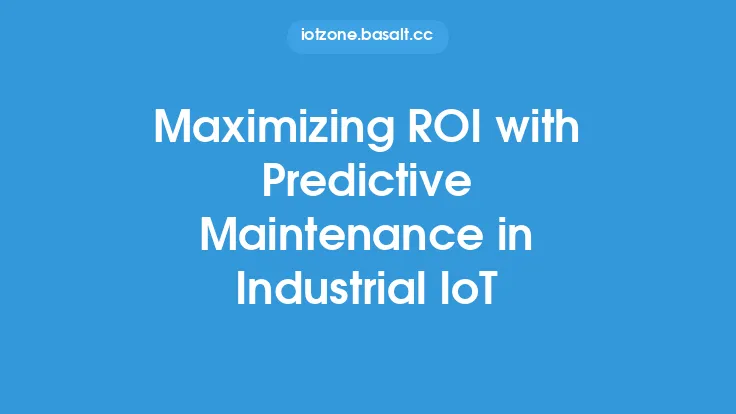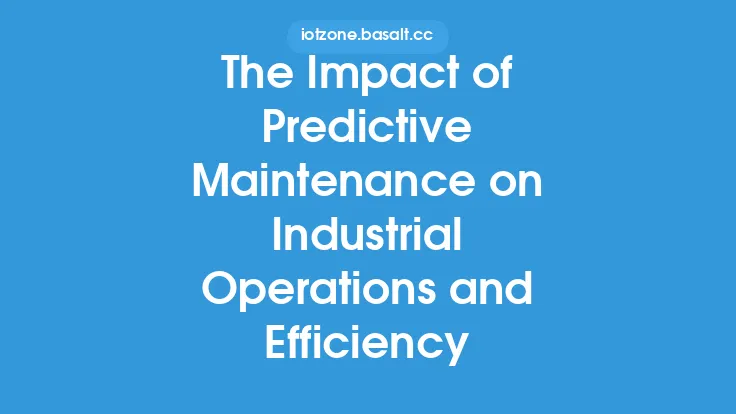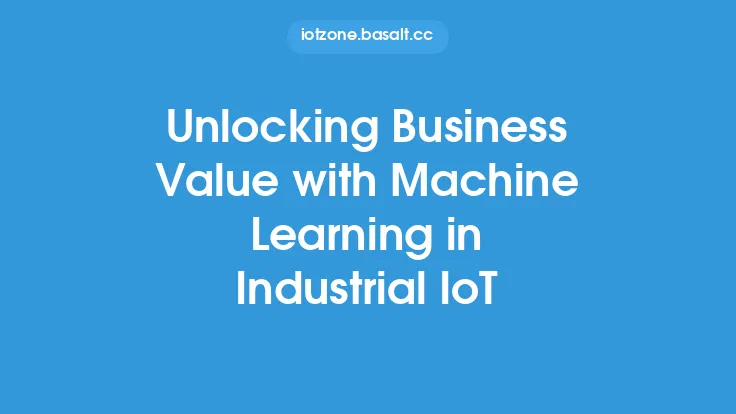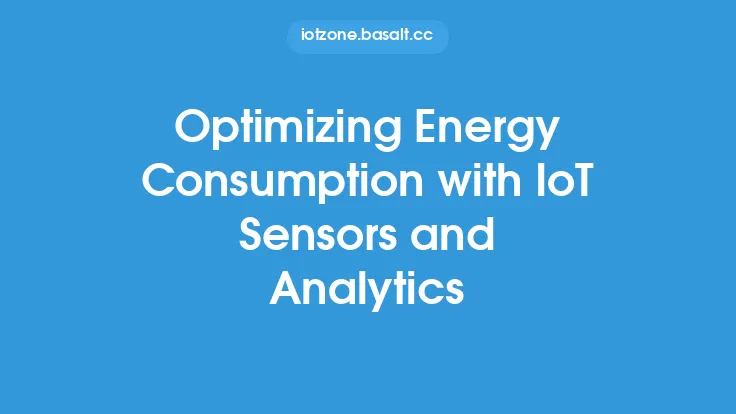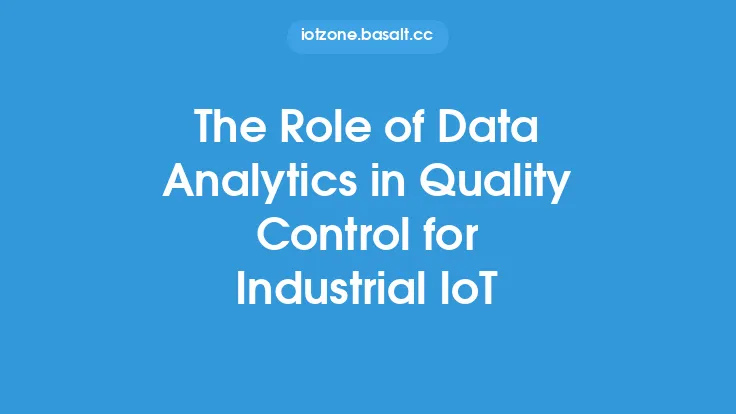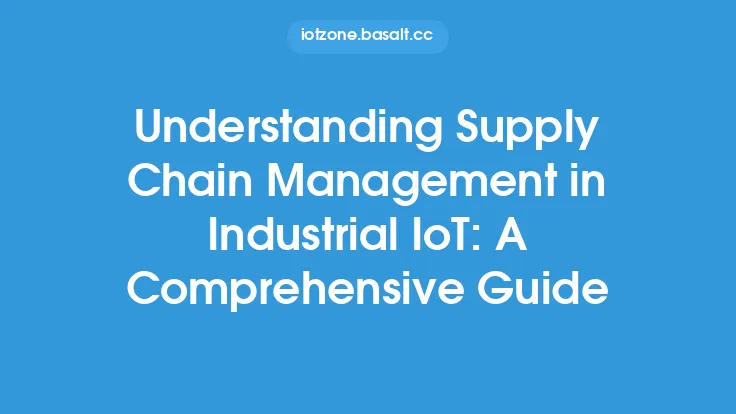The Industrial Internet of Things (IIoT) has revolutionized the manufacturing sector by providing a wide range of benefits, including improved efficiency, reduced costs, and enhanced productivity. One of the key areas where IIoT has made a significant impact is in optimizing production workflows. By leveraging IIoT technologies, manufacturers can streamline their production processes, reduce downtime, and improve overall quality.
Introduction to Industrial IoT
Industrial IoT refers to the use of IoT technologies in industrial settings, such as manufacturing, oil and gas, and transportation. IIoT involves the use of sensors, actuators, and other devices to collect and analyze data from industrial equipment and processes. This data is then used to optimize production workflows, predict maintenance needs, and improve overall efficiency. IIoT technologies include machine learning, artificial intelligence, and data analytics, which enable manufacturers to make data-driven decisions and improve their operations.
Key Components of Industrial IoT
There are several key components of IIoT that are essential for optimizing production workflows. These include:
- Sensors and actuators: These devices collect data from industrial equipment and processes, and send signals to control the equipment.
- Communication protocols: These protocols enable the exchange of data between devices and systems, and include technologies such as Wi-Fi, Bluetooth, and Ethernet.
- Data analytics: This involves the use of software and algorithms to analyze data from IIoT devices, and provide insights into production workflows.
- Cloud computing: This enables the storage and processing of large amounts of data from IIoT devices, and provides a platform for data analytics and machine learning.
- Cybersecurity: This is essential for protecting IIoT systems from cyber threats, and ensuring the integrity of data and equipment.
Optimizing Production Workflows with IIoT
IIoT can be used to optimize production workflows in a number of ways. These include:
- Predictive maintenance: IIoT sensors can be used to monitor equipment condition, and predict when maintenance is required. This can help reduce downtime, and improve overall efficiency.
- Quality control: IIoT sensors can be used to monitor product quality, and detect defects or anomalies. This can help improve overall quality, and reduce waste.
- Supply chain optimization: IIoT can be used to track inventory levels, and optimize supply chain operations. This can help reduce costs, and improve delivery times.
- Energy management: IIoT sensors can be used to monitor energy usage, and optimize energy consumption. This can help reduce costs, and improve sustainability.
Technical Requirements for IIoT Implementation
Implementing IIoT requires a number of technical requirements, including:
- Device management: This involves the management of IIoT devices, including sensors, actuators, and communication devices.
- Data management: This involves the collection, storage, and analysis of data from IIoT devices.
- Security: This involves the protection of IIoT systems from cyber threats, and the ensuring of data integrity.
- Integration: This involves the integration of IIoT systems with existing manufacturing systems, including enterprise resource planning (ERP) and manufacturing execution systems (MES).
- Scalability: This involves the ability of IIoT systems to scale to meet the needs of growing manufacturing operations.
Best Practices for IIoT Implementation
There are several best practices for IIoT implementation, including:
- Start small: Begin with a small pilot project, and scale up as needed.
- Define clear goals: Define clear goals and objectives for IIoT implementation, and ensure that all stakeholders are aligned.
- Choose the right technology: Choose IIoT technologies that meet the specific needs of the manufacturing operation.
- Ensure security: Ensure that IIoT systems are secure, and that data is protected from cyber threats.
- Monitor and evaluate: Monitor and evaluate IIoT systems regularly, and make adjustments as needed.
Future of Industrial IoT
The future of IIoT is exciting, with a number of emerging trends and technologies that are expected to shape the industry. These include:
- Artificial intelligence: AI is expected to play a major role in IIoT, enabling manufacturers to make data-driven decisions and improve their operations.
- 5G networks: 5G networks are expected to provide faster and more reliable communication for IIoT devices, enabling real-time monitoring and control.
- Edge computing: Edge computing is expected to enable faster processing of IIoT data, reducing latency and improving overall efficiency.
- Digital twins: Digital twins are expected to enable manufacturers to create virtual models of their production processes, enabling simulation and optimization.
Conclusion
In conclusion, IIoT has the potential to revolutionize the manufacturing sector by optimizing production workflows, reducing costs, and improving overall efficiency. By leveraging IIoT technologies, manufacturers can streamline their production processes, reduce downtime, and improve overall quality. However, implementing IIoT requires careful planning, and a number of technical requirements must be met. By following best practices, and staying up-to-date with emerging trends and technologies, manufacturers can unlock the full potential of IIoT and achieve significant benefits.
